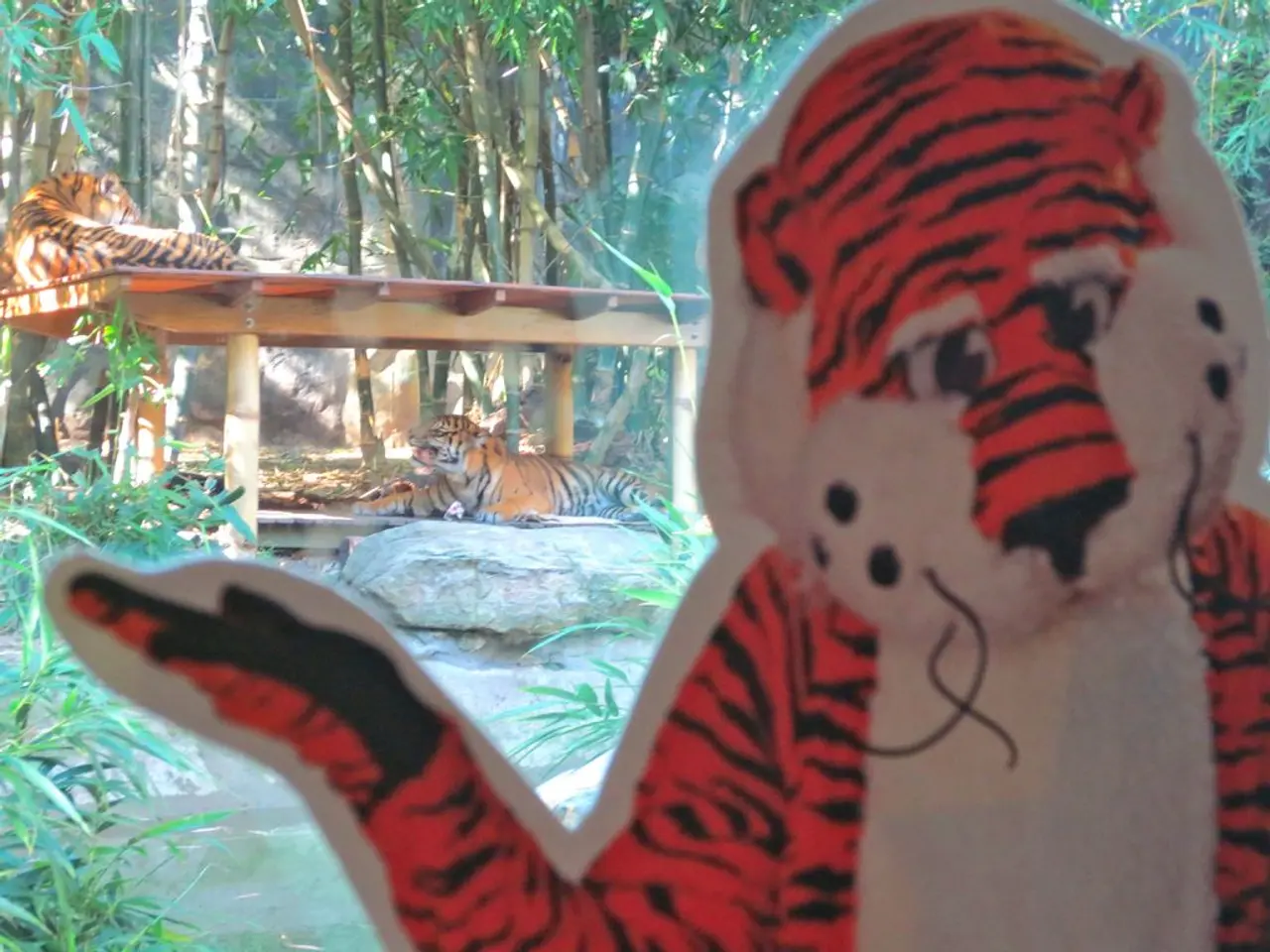Felines with Identical Species: Panther and Cougar Share Common Genetic Background
In the vast landscapes of the Americas, a large wild cat known by various names such as panther, cougar, mountain lion, puma, or catamount, is a common sight. Scientifically known as Puma concolor, this elusive creature has adapted to a wide range of environments, from the cold Canadian wilderness to the warm jungles of South America [1].
However, in the sun-soaked swamps and forests of South Florida, a unique subpopulation of this species, known as the Florida panther, faces distinct challenges. Despite their geographical and ecological differences, the Florida panther is not considered a separate species or even a distinct subspecies under modern classification. Instead, it is a regional population of the cougar (Puma concolor) [2][4].
The confusion between panther and cougar is due to regional naming rather than two distinct animals. The Florida panther, once recognised as a distinct subspecies (*Puma concolor coryi*), is now treated as a regional variant or population within the same species. While the Florida panther has unique local adaptations and a geographic isolation in southern Florida, genetically and taxonomically, it is not different enough from other North American cougars to warrant a separate species classification [1][2][4].
In the western United States, they're called mountain lions, in Florida, they're known as Florida panthers, and in South America, they're often called pumas or "gato monte." Despite their diverse names, these cats share common characteristics. They are solitary animals with large territories, adapted for stealth, relying on powerful hind legs and strong front legs to stalk and ambush prey, usually deer or smaller mammals. They are considered top predators, and their home ranges can span thousands of acres depending on food availability and terrain [3].
However, these large cats face numerous challenges. As cities and suburbs expand, encounters with humans become more frequent, often involving livestock or pets. In the case of the Florida panther, human encroachment is cited as the biggest threat to their survival. To combat genetic problems from inbreeding, conservationists introduced eight female cougars from Texas into the Florida panther population [5].
Conservation efforts vary by region, with a focus on protecting habitat and genetic diversity in Florida. Habitat corridors, road crossings, and wildlife protection laws are key tools for ensuring the survival of cougars and preventing them from becoming an officially endangered animal. In other areas, conservation efforts include monitoring home range size, managing human-wildlife conflicts, and educating the public.
The Florida panther, a subspecies of Puma concolor, faces unique environmental threats due to urban development, habitat loss, and road traffic, making them one of the most endangered animals in North America. Despite these challenges, efforts are underway to protect this elusive and majestic creature and ensure its survival for future generations.
References: [1] Livingston, J. M., & Sunquist, M. (2002). Wild Cats of the World. University of Chicago Press. [2] Wilson, D. E., & Reeder, D. M. (2005). Mammal Species of the World: A Taxonomic and Geographic Reference. Johns Hopkins University Press. [3] Nowak, R. M. (1999). Walker's Mammals of the World: Sixth Edition. Johns Hopkins University Press. [4] Baker, R. A. (2005). The Cougar: The American Lion. University of California Press. [5] Florida Fish and Wildlife Conservation Commission. (n.d.). Florida Panther. Retrieved from
- The elusive creature, Puma concolor, known as various names such as panther, cougar, mountain lion, puma, or catamount in different regions, faces distinct challenges in the sun-soaked swamps and forests of South Florida, where it's called the Florida panther.
- Despite being a regional population rather than a separate species or subspecies, the Florida panther has unique local adaptations and a geographic isolation in southern Florida, making it one of the most endangered animals in North America.
- Conservationists are working to protect the Florida panther's habitat and genetic diversity, introducing eight female cougars from Texas into the Florida panther population to combat genetic problems from inbreeding.
- In the NBA and NCAA basketball, points are scored by shooting basketballs through a hoop, whereas in the WNBA, the women's professional basketball league, the rules and strategies may differ but the objective remains the same: to outscore the opposing team.
- Outdoor living and home-and-garden enthusiasts may choose to incorporate technology into their lifestyles, such as smart irrigation systems for efficient water usage, or automated lighting that conserves energy.
- Sports, culture, and lifestyle can intersect in unexpected ways in the vast landscapes of the Americas, as city life expands and traditional outdoor living becomes a blend of modern conveniences and respect for nature and native wildlife like the Florida panther.




